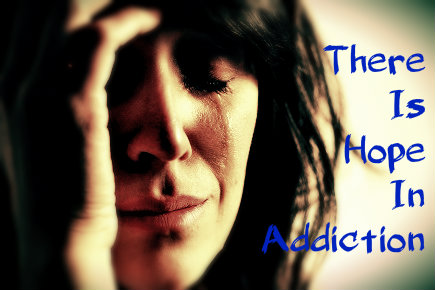Cannabis is the umbrella term for the mind-altering products marijuana, hashish and hashish oil, which come from the cannabis group of plant species. All of these products create substantial risks for physical dependence and addiction when used regularly for relatively extended amounts of time. Cannabis use also comes with a known risk for psychosis and certain other mental health problems. In a study published in August 2013 in the journal Addiction, a team of Dutch researchers looked at the relative risks for mental illness in dependent/addicted marijuana users and users unaffected by dependence/addiction. The researchers concluded that the mental illness risks in these populations differ in substantial ways.
What Exactly Is Cannabis?
 Marijuana comes from dried, non-concentrated parts of Cannabis plants such as the leaves, stems and flowers. Hashish and hashish oil, on the other hand, come from the purposeful concentration of these plant parts. All three of these cannabis-based products contain the same active ingredient, known informally as THC and formally as tetrahydrocannabinol. THC triggers changes in brain function that create the classic effects of cannabis intoxication, including altered thinking and sensory perception, a rise in pleasurable feelings, appetite increases, reduced clarity in several major areas of consciousness, and a reduced ability to move the body’s muscles in an efficient, controlled manner.
Marijuana comes from dried, non-concentrated parts of Cannabis plants such as the leaves, stems and flowers. Hashish and hashish oil, on the other hand, come from the purposeful concentration of these plant parts. All three of these cannabis-based products contain the same active ingredient, known informally as THC and formally as tetrahydrocannabinol. THC triggers changes in brain function that create the classic effects of cannabis intoxication, including altered thinking and sensory perception, a rise in pleasurable feelings, appetite increases, reduced clarity in several major areas of consciousness, and a reduced ability to move the body’s muscles in an efficient, controlled manner.
Marijuana’s Dependence And Addiction
Despite its reputation as a relatively harmless, “natural” substance, THC can make substantial alterations in a person’s long-term brain function when used repeatedly or habitually over time. These changes in function can eventually make the brain “see” the presence of THC as a chemical norm rather than a rare or occasional event. When this situation arises, the affected individual has what’s known as a physical dependence on the effects of cannabis/THC. By itself, physical dependence on a substance does not necessarily constitute a dangerous or harmful situation. However, when combined with persistent drug-seeking behaviors and other disruptive or dysfunctional actions, dependence establishes the necessary groundwork for the onset of a drug addiction.
Mental Health Risks Of Marijuana Use
While under the temporary influence of cannabis products, users commonly experience short-term symptoms that closely approximate psychosis, an altered mental state (classically associated with schizophrenia and schizophrenia-related illnesses) that primarily features delusional thought processes and/or some sort of sensory hallucination. In some cases, regular users develop a more extended form of psychosis that continues as long as a pattern of cannabis intake continues. In addition, current evidence strongly indicates that habitual cannabis users have increased long-term chances of developing diagnosable cases of schizophrenia or depression that continue to exert their effects even when a pattern of cannabis intake stops.
In the study published in Addiction, researchers from the University of Amsterdam and the Netherlands Institute of Mental Health and Addiction sought to determine if people physically dependent on cannabis have higher risks for developing mental health issues than cannabis users unaffected by dependence. They made this determination by tracking the mental health diagnoses of 252 young adults affected by cannabis dependence, as well as the diagnoses of 269 young adult, non-dependent cannabis users. For comparison’s sake, they also tracked the mental health diagnoses of over 1,000 non-cannabis-using young adults. The researchers did not attempt to differentiate issues of cannabis dependence from issues of cannabis addiction.
Effects On Mental Illness In Dependent vs. Non-Dependent Marijuana Users
After reviewing the gathered data, the researchers found that both dependent and non-dependent cannabis users have a higher rate of mental illness than people who don’t use cannabis at all. They also found that dependent and non-dependent cannabis users are similar in most ways and share comparable patterns of general cannabis use, patterns of other forms of substance use and histories of problematic or traumatic childhoods. While dependent cannabis users have a higher overall rate of mental illness than non-dependent users, non-dependent users have higher rates than dependent users for illnesses called externalizing disorders, which include attention-deficit/hyperactivity disorder (ADHD), oppositional defiant disorder and conduct disorder. Conversely, dependent users have particularly high rates for illnesses called internalizing disorders, which include mood disorders (depressive and bipolar illness) and a range of conditions referred to together as anxiety disorders.
Most of the difference in the mental illness rates between dependent and non-dependent cannabis users disappeared when the authors of the study published in Addiction took certain secondary factors into account, including the use of other substances and the presence of traumatic or problematic childhoods. However, even with these adjustments, dependent users still have higher illness rates than non-dependent users. Except for the spike in their rates for ADHD, oppositional defiant disorder and conduct disorder, non-dependent cannabis users have mental health profiles that closely resemble the profiles found among people who don’t use cannabis.
Bipolar disorder is a mental illness that causes significant mood swings. It affects as much as two percent of the population and first manifests primarily in the late teens and early 20s. Although the severity and types of mood can vary dramatically among patients, the most common example of bipolar disorder is a cycling between periods of happiness and sadness, often at extreme levels (i.e. euphoria vs. despair). Although counseling can help patients learn how to identify their distinct moods, as well as the things that trigger each mood swing, many patients will also benefit from some sort of medication to help dampen negative symptoms and neutralize moods.
 It is now pretty obvious that people who are taking prescription medications, including bipolar medications, should refrain from drinking alcohol or using recreational drugs as these substances can negatively interfere with the proper functioning of the medication. In some cases, the prescriptions and other substances can negatively interact to the point of overdose or death.
It is now pretty obvious that people who are taking prescription medications, including bipolar medications, should refrain from drinking alcohol or using recreational drugs as these substances can negatively interfere with the proper functioning of the medication. In some cases, the prescriptions and other substances can negatively interact to the point of overdose or death.
The Importance Of Identifying Signs Of Substance Abuse In Bipolar Patients
Unfortunately, due to the nature of the disease, some bipolar patients are unable to refrain from using alcohol or drugs even when they are taking prescription medication for their illness. In fact, roughly half of all patients with some form of bipolar disorder also have a drug or alcohol problem. Thus, when treating a patient who has bipolar disorder, mental health professionals must be vigilant in identifying signs of substance abuse or alcoholism as the two illnesses tend to go hand in hand.
Scientists have yet to discover a definitive explanation for the high incidence of substance abuse among bipolar patients. In fact, the real explanation likely entails a combination of factors. For instance, genetics may play a pivotal role — a family history of substance abuse plus bipolar disorder increases a person’s risk of having both diseases. Further, bipolar disorder can be a tough illness to treat. Although certain medications have been shown to be successful in alleviating certain bipolar symptoms in many patients, there is currently no cure for the disease and no one magic medication that renders all patients symptom free. As such, many patients use drugs and alcohol as a way to escape the symptoms of or fallout from the disease. This phenomenon is known as “self-medicating” and is often found in patients with the more debilitating mental illnesses, including bipolar disorder.
It turns out that doctors must be especially vigilant when it comes to identifying substance abuse in female bipolar patients. Studies show that females suffering from bipolar disorder are several times more likely to abuse alcohol than men with bipolar disorder. Although men with bipolar disorder also have a higher incidence of alcoholism than men without bipolar disorder, the rate is nowhere near as high as with women.
Factors For Bipolar Disorder
While it could certainly be true that bipolar patients have a higher predisposition to addiction than non-patients, both family history and the fact that bipolar patients tend to self-medicate with drugs and alcohol is more likely the culprit behind such a high rate of alcoholism. Researchers at UCLA conducted a study of roughly two hundred and fifty bipolar patients who were being treated at UCLA on an outpatient basis. The results of the survey showed that the males with alcohol problems were more likely to have a history of alcoholism in their families than males without such alcohol problems.
However, female participants with alcohol problems did not report similar rates of family alcohol problems. Instead, these patients reported co-occurring issues with anxiety and depression. Thus, researchers hypothesized that women bipolar patients were more likely to self-medicate than their male counterparts. Unfortunately, research also suggests that women are less likely to seek help for drinking problems than men. This puts female bipolar patients at high risk not only for alcoholism, but for untreated alcoholism.
Read More About Addiction And Mental Health – There Is Hope!
In order to fully and accurately evaluate the global impact of various diseases and harmful health conditions, researchers in the United States and Australia analyzed extensive medical data collected from more than 180 countries representing every geographical region on the planet. Working under the auspices of the 2010 Global Burden of Diseases, Injuries and Risk Factors Study, these investigators were able to compare and contrast a wide range of medical conditions, and after crunching all of the numbers, they discovered that mental health and substance use disorders are now the world’s leading cause of non-fatal disease.
 For the purposes of this study, 20 different conditions were categorized under the mental health and substance use disorder umbrella, including depression, drug and alcohol abuse, idiopathic intellectual disabilities, and all known anxiety, childhood behavior, and pervasive development disorders. A study such as this would have been difficult to perform in the past since legitimate statistics on mental health disorders were often sparse or non-existent, especially in the developing world, but, fortunately, global awareness about mental illness has grown to the point where these conditions are now being recognized and diagnosed everywhere with much greater accuracy.
For the purposes of this study, 20 different conditions were categorized under the mental health and substance use disorder umbrella, including depression, drug and alcohol abuse, idiopathic intellectual disabilities, and all known anxiety, childhood behavior, and pervasive development disorders. A study such as this would have been difficult to perform in the past since legitimate statistics on mental health disorders were often sparse or non-existent, especially in the developing world, but, fortunately, global awareness about mental illness has grown to the point where these conditions are now being recognized and diagnosed everywhere with much greater accuracy.
A Closer Look At Mental Health And Substance Abuse
In total, the conditions grouped together under the mental health and substance use disorder classification accounted for 22.8 percent of the global non-fatal disease burden, making them a greater factor for serious illness than such highly-publicized health problems as HIV/AIDS, diabetes and tuberculosis.
Breaking that 22.8 percent down into specific conditions, depressive disorders are easily the most common type of mental health problem experienced, accounting for 40.5 percent of all of the incidences reported. This means that depression alone is responsible for more than 10 percent of the global burden of non-lethal disease.
Next in line in frequency of diagnosis within the mental health/substance abuse group are:
- Drug and Alcohol Addiction (20.5 percent)
- Anxiety Disorders (14.6 percent)
- Schizophrenia (7.4 percent)
- Bipolar Disorder (7.0 percent)
- Pervasive Developmental Disorders (4.2 percent)
- Childhood Behavioral Disorders (3.4 percent)
- Eating Disorders (1.2 percent)
When the statistics for fatal and non-fatal illnesses are combined, mental health and substance use disorders are the fifth leading cause of death or serious disease across the globe. Naturally the incidence of specific mental conditions plus drug and alcohol addiction varies by geographical location, but there is no country or region of the world where common mental health problems and substance use issues are unheard of or insignificant in their levels of occurrence. The incidence of all mental health problems is higher in women and girls than in men and boys, but the inverse is true with respect to substance abuse.
Mental Health – Global Problems And Individual Solutions
While global statistics on mental health troubles and drug and alcohol addiction provide a useful overview of the situation, ultimately each individual nation-state will be forced to deal with the consequences of these conditions largely on its own. And unfortunately, in every single country, mental illness and substance abuse are placing significant financial and personnel burdens on health care systems that are already chronically undermanned and/or underfunded. In the developing world, shortages of trained medical professionals who are capable of providing effective and efficient mental treatment services are a constant problem, while in both developing and developed nation the high cost of treatment and rehabilitation often prevents suffering people from getting the attention and assistance they so desperately need. Complicating the picture further is that mental illness still too often goes undiagnosed, most frequently among the poor, and, in the case of substance abuse, even when individuals do manage to get treatment, the failure rate of this type of rehabilitation is discouragingly high.
In the past, mental illness carried a stigma that tended to prevent suffering people from coming forward and asking for help, or from admitting that they had a problem in the first place. Fortunately this situation has changed and changed dramatically, and that provides great reason for optimism and hope. Financial challenges that restrict the availability of quality mental health care for all are real and pervasive; however, as awareness of the depth of the problem of mental illness and substance abuse continues to spread, government agencies and public health officials in nations all across the planet will have little choice but to acknowledge reality and bring their funding priorities into line with the real needs of their citizens.
Gangs are known for the physical and social threats they pose to rival gang members and their general communities. However, gang membership itself apparently poses a significant threat to mental health. According to the results of a study reported in 2013 by researchers from Queen Mary, University of London, gang members have substantially increased risks for developing harmful psychological symptoms or a diagnosable mental illness when compared to the at-large population.
Gang Membership Basics
Teenagers and people in the early stages of adulthood form the majority of gang members in the U.S., the American Academy of Child & Adolescent Psychiatry reports. However, increasingly, preteens and younger children also become involved in gang activity. While public perception commonly links the presence of gangs to large urban areas, these organized units also appear in smaller urban areas, isolated towns and rural regions. Known consequences of gang participation include increased chances of committing violence or being a target of violence, as well as heightened chances of substance abuse/addiction or incarceration, heightened chances of involvement in risky sexual activity and lowered chances of developing useful work skills or receiving useful academic training.
The presence of certain mental health problems—including attention-deficit hyperactivity disorder (ADHD) and a conduct-related condition called oppositional defiant disorder—can increase a person’s chances of getting involved with a gang. Other known risk factors for joining a gang include living in an area populated by gangs, lack of appropriate adult supervision, exposure to music or other cultural influences that applaud gang participation, lack of work or educational opportunities, a violent home environment and a home environment or family background that includes gang members. A lack of self-esteem or role models also increases gang participation risks. Many individuals cite their gang affiliation as a “home” or stabilizing influence in their lives.
Mental Health Risks
In the study reported by Queen Mary, University of London, a team of British researchers examined the connections between gang involvement, violence and mental illness in a group of over 4,600 men between the ages of 18 and 34. Roughly 2 percent of these men identified themselves as current gang members, while slightly more than 27 percent identified themselves as recent perpetrators of physical assault or some other form of violent activity. The remaining 70.4 percent of the participants described themselves as being non-violent in the five-year period prior to the start of the study.
After reviewing their findings, the authors of the study concluded that both gang members and violent men not affiliated with gangs have significantly increased risks for developing a range of specific mental disorders or symptoms common to several different mental disorders. In the case of gang members, especially prominent illnesses include alcohol or drug addiction, antisocial personality disorder or some other personality disorder, and various types of anxiety disorder. Prominent symptoms common to a number of mental illnesses include hallucinations and/or delusions (also known as psychosis) and suicidal behaviors that culminate in a suicide attempt.
Significance and Considerations
The authors of the Queen Mary, University of London, study believe that they are the first researchers to assess gang members for mental health problems other than substance use disorders. They attributed the increased risks for anxiety disorders and psychosis in gang members to violence-oriented thinking, exposure to violence at the hands of others and fears about future violence exposure. In many cases, these problems manifest in the form of post-traumatic stress disorder (PTSD), a condition once viewed as an anxiety disorder in the U.S., but now classified along with several other illnesses as a trauma- and stressor-related disorder. The authors of the study attributed the rate of suicidal behavior and suicide attempts in gang members to both the psychological strain of mental illness and the impulsive nature of violent behavior, which can turn inward in some individuals.
Generally speaking, gang members and non-gang members who engage in violence are younger than non-violent men and also have a higher rate of unemployment. In the U.K., which has a socialized medical system, gang members also seek access to mental health services more often than non-violent men. The authors of the study note that the men in the participating age range are typically gang “lifers;” they don’t know if the same problems with mental illness appear in short-term or younger gang members.
With only two months left in her junior year, Siobhan processed the final documents for her withdrawal from college. Academically, she had done quite well—she’d gotten into a great school, after all—and on paper, no one would be able to decipher the reason for her sudden departure. But Siobhan has been struggling with issues since she moved to her college town—nearly 1,000 miles away from her parent’s home—and those issues finally came to a head. The most pressing issue, and the reason she withdrew from classes, was panic disorder.
Siobhan had a happy childhood—she and her younger sister were well loved by their parents and had participated in music, dance and competitive academic pursuits. They’d had the privilege to travel the world with their grandparents, and had regularly volunteered for the organizations behind the philanthropic pursuits their mother was always overseeing. Aside from her father’s private struggle with clinical depression, everyone had been healthy and seemingly well-adjusted.
When Siobhan was 17, however, she was involved in a serious car accident. A man had sideswiped her in an intersection—Siobhan had been making a legal left turn—and the driver, only 27, was killed. From that day to this, Siobhan experiences panic whenever she rides in a car (she refuses to drive), and sometimes experiences the symptoms of panic attack while simply contemplating impending car travel—racing heart, trembling, profuse sweating and wooziness.
Siobhan’s debilitating fear about the prospect of driving and riding in a car has left her unable to leave her apartment. In addition to her symptoms of panic disorder, she has developed generalized anxiety disorder. Her greatest fears revolve around the idea of losing control and being witnessed mid-attack. She is an intelligent young woman and has excelled in nearly every pursuit, but her panic disorder has begun to truly inhibit her ability to function normally.
Symptoms of Panic Disorder

The National Institute of Mental Health (NIMH) describes panic disorder as “sudden and repeated attacks of fear that last for several minutes.” These attacks are typically brought on by an individual’s fear of losing control or the imagined threat of danger, and are frequently triggered by a place or circumstance, although sufferers can even experience a panic attack during sleep. Panic attacks can feel like a heart attack, and a sufferer’s fear of having an attack, or the inability to stop it once it has started, may bring on further attacks.
NIMH lists the symptoms for panic disorder as:
- It is estimated that there are 6 million panic disorder sufferers in the U.S. and that nearly twice as many women than men experience its symptoms. Individuals most often acquire the disorder in adolescence or early adulthood, and there exists a genetic component; a person may be predisposed to panic disorder if they have a parent who has an anxiety disorder. Sudden and repeated attacks of fear
- A feeling of being out of control during a panic attack
- An intense worry about when the next attack will happen
- A fear or avoidance of places where panic attacks have occurred in the past
- Physical symptoms during an attack, such as a pounding or racing heart, sweating, breathing problems, weakness or dizziness, feeling hot or a cold chill, tingly or numb hands, chest pain, or stomach pain
The Problem of Anxiety
According to the Anxiety and Depression Association of America, panic disorder frequently occurs with other mental health and physical disorders. Depression, irritable bowel syndrome (IBS), asthma, substance abuse, and other anxiety disorders like agoraphobia, generalized anxiety disorder (GAD), post-traumatic stress disorder (PTSD), social phobia and other phobias, and substance-induced anxiety disorder are some of these frequently co-occurring disorders.
People with panic disorder do not have to suffer; there are effective treatments for this anxiety issue and others. Treatment for panic disorder may include self-directed cognitive behavioral therapy (CBT), antidepressants or antianxiety medications, and exposure treatment—a type of CBT that involves exposure to an object or circumstance that causes phobia or panic.
Siobhan is receiving treatment for her panic disorder, and has even encouraged her father to attend therapy for his depression. Healing has not happened overnight but she has seen considerable improvements, and her fear of potential attacks has greatly reduced. She intends to be back in college at the start of the next semester, this time with tools to help her cope with her anxiety and a belief that panic will not rule her life.
College students face many adversaries, panic attacks and anxiety are only the surface. Many students use this time of their life to explore the drug world – however, many do not know the dangers these drugs possess. Read College Student’s Death Sparks Renewed Warnings About the Dangers of Inhalants to learn more.
When people are afraid to get on an airplane, friends may comfort them by saying that many more people die in motor vehicle accidents than in airplane crashes. It seems incomprehensible to think that someone could say, “And even more people die by suicide.” But according to the Centers for Disease Control and Prevention (CDC), that is, in fact, the case.
In a recent issue of the CDCs Morbidity and Mortality Weekly Report, the number of people who died in motor vehicle accidents in 2010 was listed at 33,687, while the number of people who committed suicide was 38,364. Researchers noted that the majority of Americans taking their own lives were in the baby boomer generation. Economic problems, easier accessibility to opioids and stresses caused by care-giving are just some of the suspected causes of the suicide increase in this generation.
Suicide rates climbed most alarmingly in the baby boomer generation. In the 10-year study period, women in their 60s had a 60 percent increase in suicides (eight per 100,000) while men in their 50s had a 50 percent increase (27 per 100,000).

Researchers speculate on multiple reasons for the spike in the suicide rate. Baby boomers are arriving at reflective ages where some of them are not satisfied with where they are in their life. Life’s pressures and problems seem to prove too much for some.
Multiple problems and pressures may be pushing the American suicide rate higher. Financial loss or strain is just one possible reason for a feeling of hopelessness that may lead to suicide. Researchers believe that other problems may be caused by the overuse and easy accessibility of prescription painkillers. Opioid addiction is also rising in this country.
Being a caregiver for an aging parent while also taking care of a child who has returned home after college can also take a toll on boomer parents. While that age group is supporting family both older and younger than themselves, who is supporting them?
CDC representatives stress that the suicide rate may decline if more prevention programs and support is offered to those at risk for suicide. Sometimes it is not just one of the above mentioned problems or pressures—it is a combination. These complex reasons can be better sorted out with the guidance of professionals
Not only should at-risk individuals be helped, but so should those who have lost a loved one to suicide. Support groups to help those survivors can help the next generation learn to live through the pain and not give up hope in their own lives.
Read More About Opioid Abuse And Suicide Risks
30 Apr 2013
Somatic Symptom Disorder | Mental Health Rehab
New Diagnosis of Somatic Symptom Disorder Sparks Controversy
Somatic symptom disorder (SSD) is the name of a newly defined mental health condition that appears in the May 2013 fifth edition of the Diagnostic and Statistical Manual of Mental Disorders, or DSM, a standard guidebook used by mental health professionals throughout the United States. The new disorder fully or partially replaces several other conditions, known collectively as somatoform disorders, included in the previous version of the DSM. People with SSD have distressing or disruptive symptoms of somatic illness, a term that doctors generally use to describe physical ailments that have no explainable physical cause. However, controversially, the SSD definition lets doctors diagnose the disorder even when a plausible physical explanation for their patients’ symptoms exists.
 Background Information
Background Information
The Diagnostic and Statistical Manual of Mental Disorders is the creation of an organization called the American Psychiatric Association. Committees of mental health professionals within this organization meet periodically to discuss new developments in mental health research, compare those developments with the current accepted norms of the psychiatric community, and decide whether they need to update the accepted norms in order to incorporate relevant information from the new findings. The decisions made by these committees are included in fully or partially revised updates of the DSM and publicly released. In addition to doctors, public health officials and insurance companies typically closely follow the criteria established by the latest DSM version.
Somatoform Disorder Basics
According to the newly outdated version of the DSM, known as DSM IV or DSM 4, somatoform disorders exist as a group of related conditions, all of which revolve around the presence of physical symptoms with mental or psychiatric origins. The full list of these conditions includes somatization disorder, which centers on chronic physical symptoms appearing in multiple parts of the body; conversion disorder, which centers on symptoms affecting the nervous system; pain disorder, which centers on the presence of severe pain; hypochondriasis (known commonly as hypochondria), which centers on a fear of having or contracting a serious physical ailment; and body dysmorphic disorder, which centers on a fixation with the “disfiguring” effects of minor or entirely self-perceived physical flaws.
The new version of the DSM, called DSM 5, eliminates somatization disorder, pain disorder and hypochondriasis as diagnosable mental disorders. It also eliminates another related condition called undifferentiated somatoform disorder. The American Psychiatric Association committee that made these changes gave several reasons for their decision. First, they wanted to do away with the considerable overlap in symptoms between different somatoform disorders. They also wanted to make it easier for non-specialist doctors to make appropriate diagnoses in their patients. In addition, they wanted to curb a tendency among doctors to treat the mind and body aspects of somatic symptoms as separate medical issues.
Somatic Symptom Disorder Basics
The newly established definition for somatic symptom disorder resembles the definition for somatization disorder in certain respects. Like somatization disorder, SSD centers on the presence of somatic symptoms that disrupt a person’s normal lifestyle. However, a person with SSD also experiences extreme or excessive degrees of emotional distress and has a preoccupation with his or her physical symptoms that manifests as a significant change in his or her behaviors, feelings, or thought processes. These combined symptoms must recur consistently for about six months.
To receive a diagnosis for one of the eliminated somatoform disorders, an individual needed to have a certain number of symptoms that came from four different categories or groups. The definition for SSD does away this requirement. Critically, the definition for SSD also gives doctors the freedom to diagnose the presence of the disorder even if a patient has a medical condition that substantially accounts for his or her symptoms.
Concerns in the Medical Community
Some mental health experts disagree with the validity of the terms used to define somatic symptom disorder. This disagreement typically focuses on the freedom that doctors have to diagnose the condition in people who have reasonable medical explanations for their somatic symptoms. Many experts believe that this freedom will lead to over-diagnosis of SSD, and also unnecessarily stigmatize certain physical ailments as the products of mental health problems. A recent field trial of the new SSD definition highlights some of these issues. During this trial, 7 percent of physically healthy individuals were misdiagnosed with SSD; in addition, 15 percent of all trial participants with heart disease or cancer—and 26 percent of all participants with fibromyalgia or irritable bowel syndrome—qualified for an SSD diagnosis.



